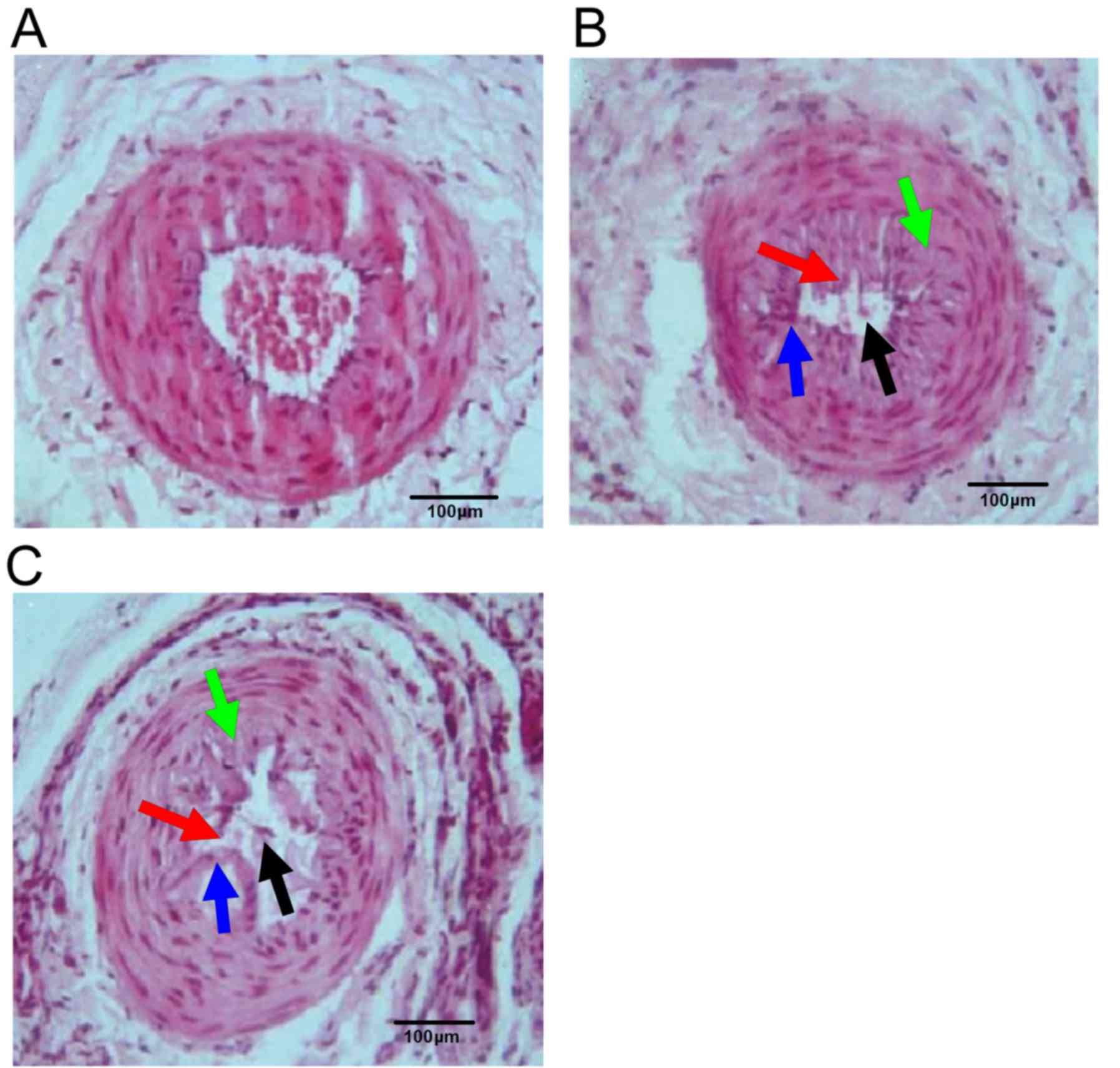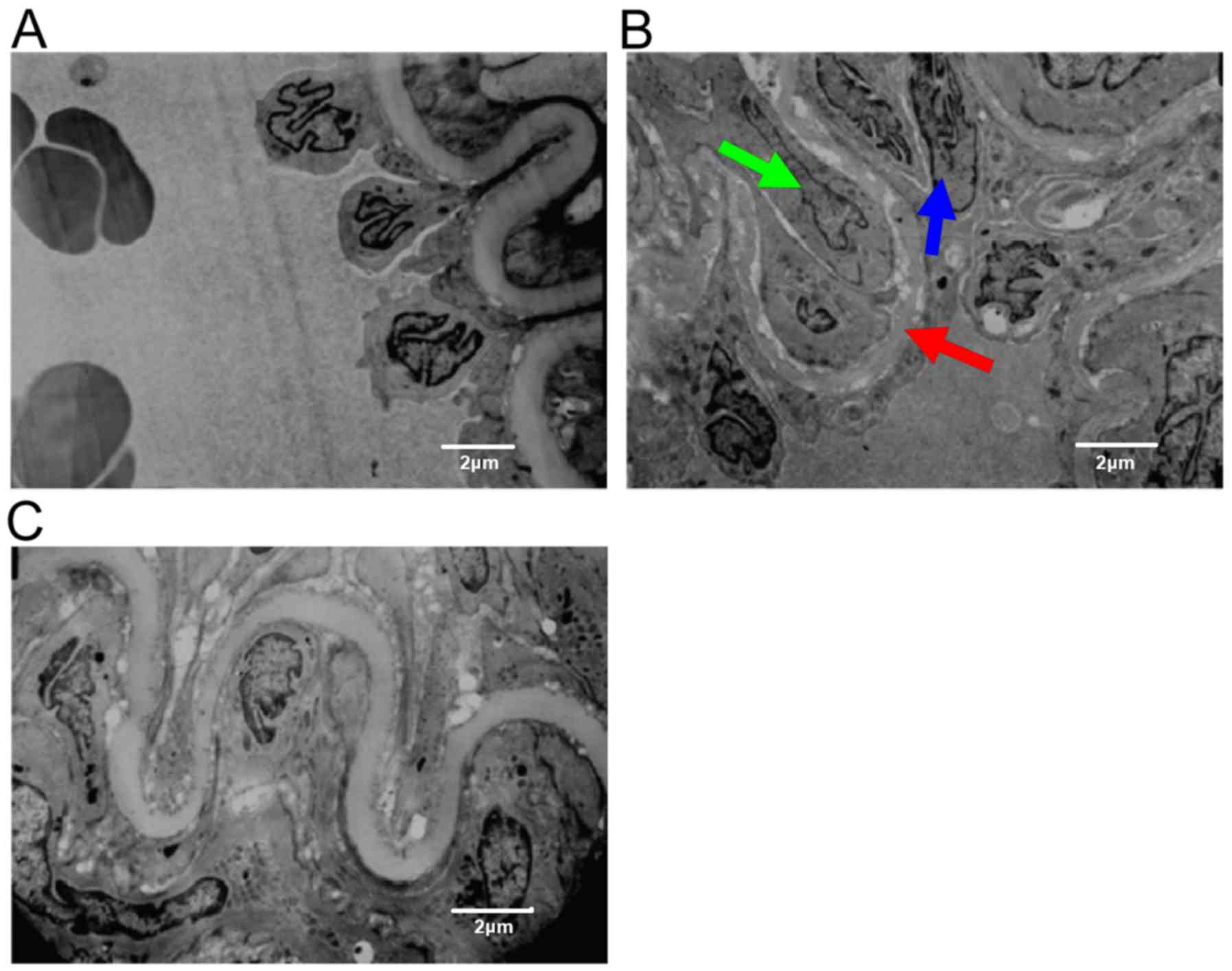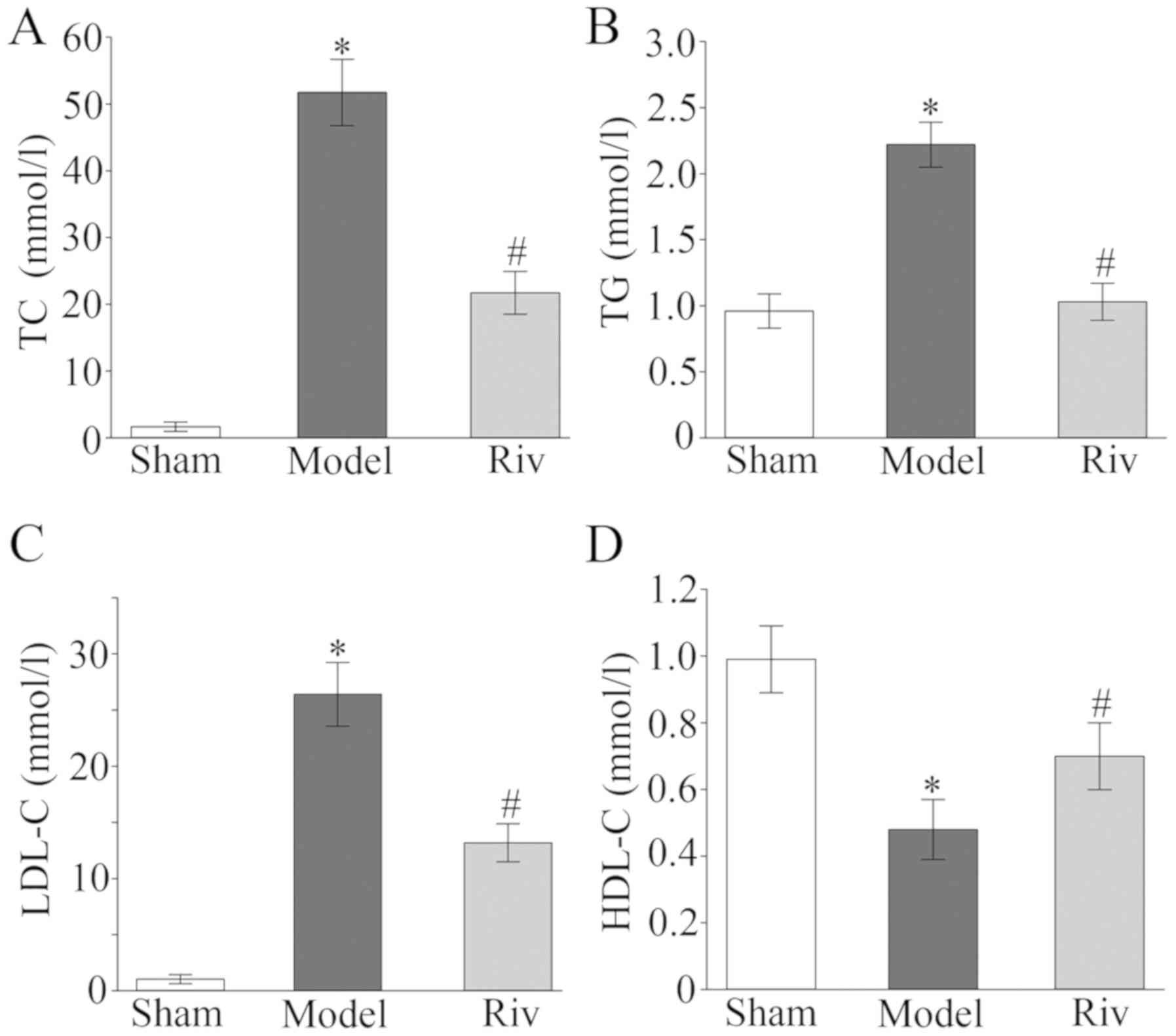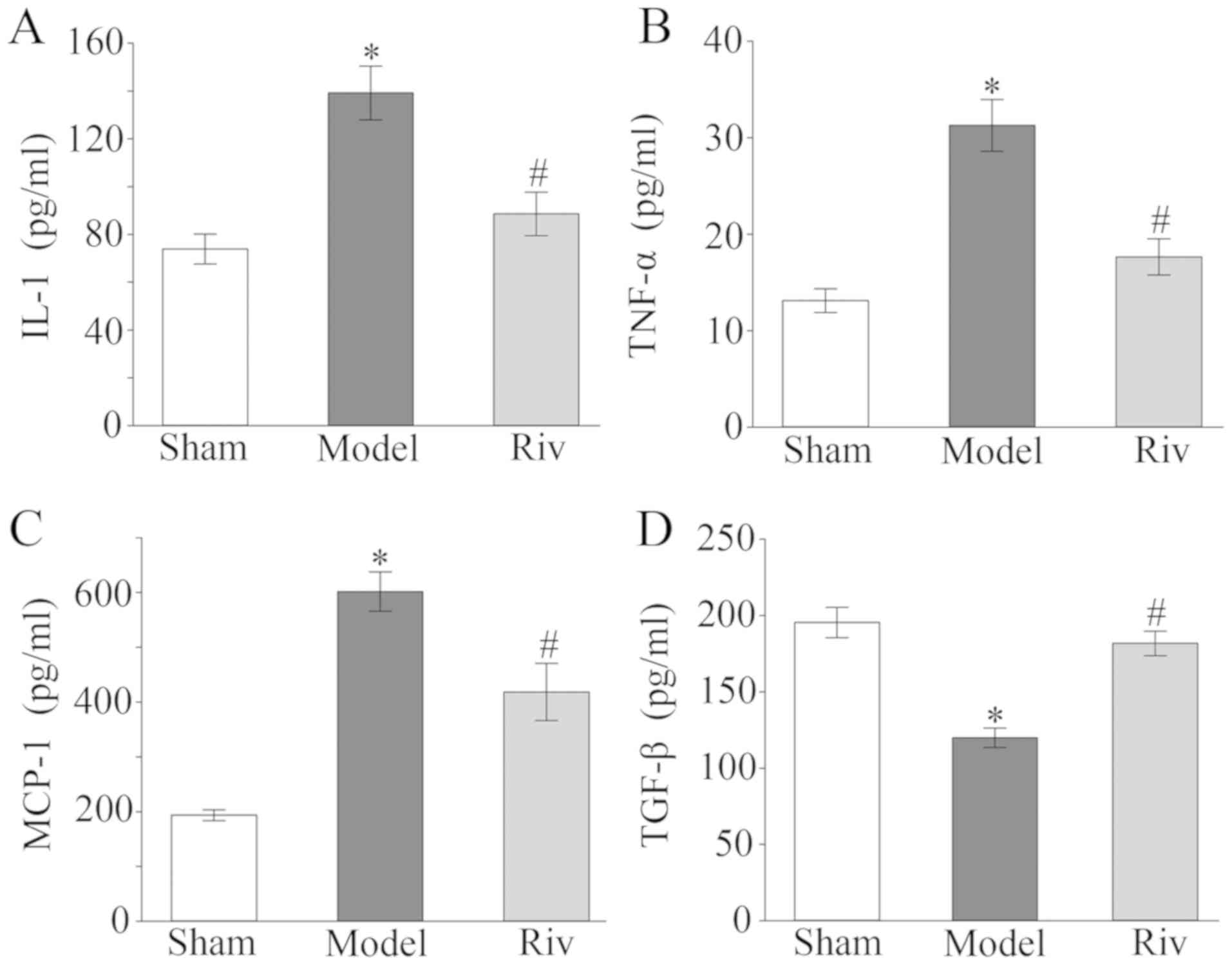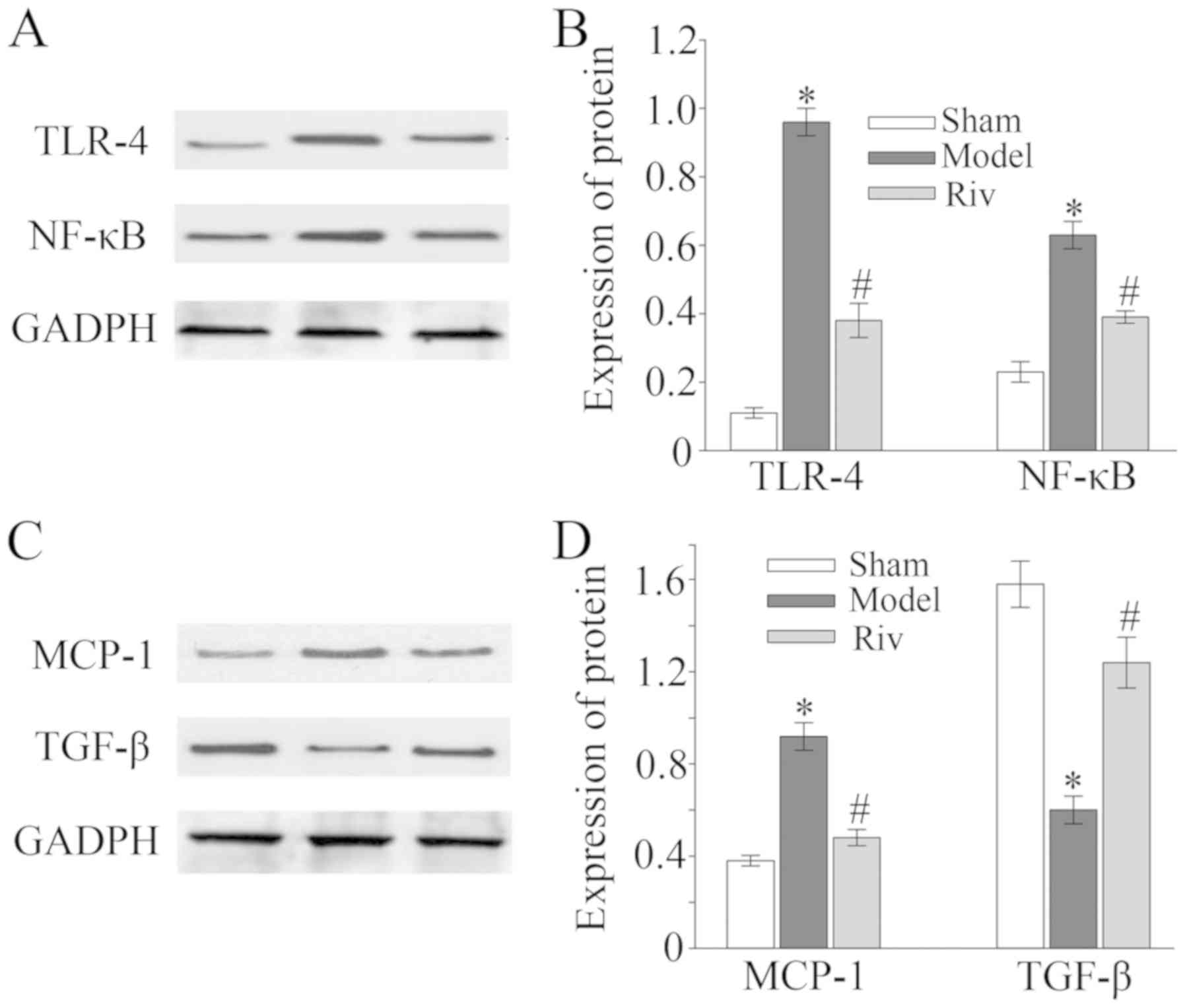|
1
|
Akagi D, Hoshina K, Akai A and Yamamoto K:
Outcomes in patients with critical limb ischemia due to
arteriosclerosis obliterans who did not undergo arterial
reconstruction. Int Heart J. 59:1041–1046. 2018. View Article : Google Scholar : PubMed/NCBI
|
|
2
|
Nau JY: Arteriosclerosis obliterans of
lower limbs: Early diagnosis before symptoms. Rev Med Suisse.
11:1458–1459. 2015.(In French). PubMed/NCBI
|
|
3
|
Zhu Y, Xian X, Wang Z, Bi Y, Chen Q, Han
X, Tang D and Chen R: Research progress on the relationship between
atherosclerosis and inflammation. Biomolecules. 8(pii): E802018.
View Article : Google Scholar : PubMed/NCBI
|
|
4
|
Psychogios K, Stathopoulos P, Takis K,
Vemmou A, Manios E, Spegos K and Vemmos K: The pathophysiological
mechanism is an independent predictor of Long-Term outcome in
stroke patients with large vessel atherosclerosis. J Stroke
Cerebrovasc Dis. 24:2580–2587. 2015. View Article : Google Scholar : PubMed/NCBI
|
|
5
|
Miyahara T and Shigematsu K: Epidemiology,
etiology, pathology, and pathophysiology of arteriosclerosis
obliterans. Nihon Rinsho. 74 (Suppl 2):S324–S327. 2016.(In
Japanese).
|
|
6
|
He XM, Zheng YQ, Liu SZ, Liu Y, He YZ and
Zhou XY: Altered Plasma MicroRNAs as novel biomarkers for
arteriosclerosis obliterans. J Atheroscler Thromb. 23:196–206.
2016. View Article : Google Scholar : PubMed/NCBI
|
|
7
|
Steffens S and Pacher P: The activated
endocannabinoid system in atherosclerosis: Driving force or
protective mechanism? Curr Drug Targets. 16:334–341. 2015.
View Article : Google Scholar : PubMed/NCBI
|
|
8
|
Yu XH, Zheng XL and Tang CK: Nuclear
Factor-kappaB activation as a pathological mechanism of lipid
metabolism and atherosclerosis. Adv Clin Chem. 70:1–30. 2015.
View Article : Google Scholar : PubMed/NCBI
|
|
9
|
Yang L, Chu Y, Wang L, Wang Y, Zhao X, He
W, Zhang P, Yang X, Liu X, Tian L, et al: Overexpression of CRY1
protects against the development of atherosclerosis via the
TLR/NF-kappaB pathway. Int Immunopharmacol. 28:525–530. 2015.
View Article : Google Scholar : PubMed/NCBI
|
|
10
|
Luo H, Wang J, Qiao C, Ma N, Liu D and
Zhang W: Pycnogenol attenuates atherosclerosis by regulating lipid
metabolism through the TLR4-NF-kappaB pathway. Exp Mol Med.
47:e1912015. View Article : Google Scholar : PubMed/NCBI
|
|
11
|
Liu R, Fan B, Cong H, Ikuyama S, Guan H
and Gu J: Pycnogenol Reduces Toll-Like receptor 4 signaling
pathway-mediated atherosclerosis formation in Apolipoprotein
E-Deficient mice. J Cardiovasc Pharmacol. 68:292–303. 2016.
View Article : Google Scholar : PubMed/NCBI
|
|
12
|
Kutikhin AG, Ponasenko AV, Khutornaya MV,
Yuzhalin AE, Zhidkova II, Salakhov RR, Golovkin AS, Barbarash OL
and Barbarash LS: Association of TLR and TREM-1 gene polymorphisms
with atherosclerosis severity in a Russian population. Meta Gene.
9:76–89. 2016. View Article : Google Scholar : PubMed/NCBI
|
|
13
|
Pan S, Lei L, Chen S, Li H and Yan F:
Rosiglitazone impedes Porphyromonas gingivalis-accelerated
atherosclerosis by downregulating the TLR/NF-kappaB signaling
pathway in atherosclerotic mice. Int Immunopharmacol. 23:701–708.
2014. View Article : Google Scholar : PubMed/NCBI
|
|
14
|
Bhaskar S, Sudhakaran PR and Helen A:
Quercetin attenuates atherosclerotic inflammation and adhesion
molecule expression by modulating TLR-NF-kB signaling pathway. Cell
Immunol. 310:131–140. 2016. View Article : Google Scholar : PubMed/NCBI
|
|
15
|
Schnittker D, Kwofie K, Ashkar A, Trigatti
B and Richards CD: Oncostatin M and TLR-4 ligand synergize to
induce MCP-1, IL-6, and VEGF in human aortic adventitial
fibroblasts and smooth muscle cells. Mediators Inflamm.
2013:3175032013. View Article : Google Scholar : PubMed/NCBI
|
|
16
|
Lin J, Kakkar V and Lu X: Impact of MCP-1
in atherosclerosis. Curr Pharm Des. 20:4580–4588. 2014. View Article : Google Scholar : PubMed/NCBI
|
|
17
|
Chen PY, Qin L, Li G, Tellides G and
Simons M: Smooth muscle FGF/TGFβ cross talk regulates
atherosclerosis progression. EMBO Mol Med. 8:712–728. 2016.
View Article : Google Scholar : PubMed/NCBI
|
|
18
|
Nikfar S, Saiyarsarai P, Tigabu BM and
Abdollahi M: Efficacy and safety of interleukin-1 antagonists in
rheumatoid arthritis: A systematic review and Meta-analysis.
Rheumatol Int. 38:1363–1383. 2018. View Article : Google Scholar : PubMed/NCBI
|
|
19
|
Mitoma H, Horiuchi T, Tsukamoto H and Ueda
N: Molecular mechanisms of action of anti-TNF-α agents-Comparison
among therapeutic TNF-α antagonists. Cytokine. 101:56–63. 2018.
View Article : Google Scholar : PubMed/NCBI
|
|
20
|
Nicoletti F, Di Marco R, Patti F, Reggio
E, Nicoletti A, Zaccone P, Stivala F, Meroni PL and Reggio A: Blood
levels of transforming growth factor-beta 1 (TGF-beta1) are
elevated in both relapsing remitting and chronic progressive
multiple sclerosis (MS) patients and are further augmented by
treatment with interferon-beta 1b (IFN-beta1b). Clin Exp Immunol.
113:96–99. 1998. View Article : Google Scholar : PubMed/NCBI
|
|
21
|
Kasashima S, Kawashima A, Endo M,
Matsumoto Y, Kasashima F, Zen Y and Nakanuma Y: A clinicopathologic
study of immunoglobulin G4-related disease of the femoral and
popliteal arteries in the spectrum of immunoglobulin G4-related
periarteritis. J Vasc Surg. 57:816–822. 2013. View Article : Google Scholar : PubMed/NCBI
|
|
22
|
Antoniou S: Rivaroxaban for the treatment
and prevention of thromboembolic disease. J Pharm Pharmacol.
67:1119–1132. 2015. View Article : Google Scholar : PubMed/NCBI
|
|
23
|
Hashikata T, Yamaoka-Tojo M, Namba S,
Kitasato L, Kameda R, Murakami M, Niwano H, Shimohama T, Tojo T and
Ako J: Rivaroxaban inhibits Angiotensin II-induced activation in
cultured mouse cardiac fibroblasts through the modulation of NF-kB
pathway. Int Heart J. 56:544–550. 2015. View Article : Google Scholar : PubMed/NCBI
|
|
24
|
Flierl U, Fraccarollo D, Micka J,
Bauersachs J and Schafer A: The direct factor Xa inhibitor
Rivaroxaban reduces platelet activation in congestive heart
failure. Pharmacol Res. 74:49–55. 2013. View Article : Google Scholar : PubMed/NCBI
|
|
25
|
Liang Y, Nie H, Ren H, Li F, Tian C, Li H
and Zheng Y: Change of Serum Angiopoietin-like Protein 2 and its
significance in patients with Arteriosclerotic occlusion. Zhongguo
Yi Xue Ke Xue Yuan Xue Bao. 39:188–195. 2017.PubMed/NCBI
|
|
26
|
Wang SM and Yao C: Standardize the
endovascular treatment for arteriosclerosis obliterans. Zhonghua
Wai Ke Za Zhi. 54:564–567. 2016.(In Chinese). PubMed/NCBI
|
|
27
|
Hartman J and Frishman WH: Inflammation
and atherosclerosis: A review of the role of interleukin-6 in the
development of atherosclerosis and the potential for targeted drug
therapy. Cardiol Rev. 22:147–151. 2014. View Article : Google Scholar : PubMed/NCBI
|
|
28
|
Chen X, Cui R, Li R, Lin H, Huang Z and
Lin L: Development of pristane induced mice model for lupus with
atherosclerosis and analysis of TLR expression. Clin Exp Rheumatol.
34:600–608. 2016.PubMed/NCBI
|
|
29
|
Zhong K: Curcumin Mediates a protective
effect Via TLR-4/NF-kB signaling pathway in rat model of severe
acute pancreatitis. Cell Biochem Biophys. 73:175–180. 2015.
View Article : Google Scholar : PubMed/NCBI
|
|
30
|
Roshan MH, Tambo A and Pace NP: The role
of TLR2, TLR4, and TLR9 in the pathogenesis of atherosclerosis. Int
J Inflam. 2016:15328322016. View Article : Google Scholar : PubMed/NCBI
|
|
31
|
Tang YL, Jiang JH, Wang S, Liu Z, Tang XQ,
Peng J, Yang YZ and Gu HF: TLR4/NF-kB signaling contributes to
chronic unpredictable mild stress-induced atherosclerosis in
ApoE-/-mice. PLoS One. 10:e1236852015.
|
|
32
|
Xie X, Shi X and Liu M: The Roles of TLR
gene polymorphisms in atherosclerosis: A systematic review and
Meta-Analysis of 35,317 subjects. Scand J Immunol. 86:50–58. 2017.
View Article : Google Scholar : PubMed/NCBI
|
|
33
|
Xu ZR, Li JY, Dong XW, Tan ZJ, Wu WZ, Xie
QM and Yang YM: Apple polyphenols decrease atherosclerosis and
hepatic steatosis in ApoE-/- Mice through the ROS/MAPK/NF-kB
pathway. Nutrients. 7:7085–7105. 2015. View Article : Google Scholar : PubMed/NCBI
|
|
34
|
Wang X, Chen Q, Pu H, Wei Q, Duan M, Zhang
C, Jiang T, Shou X, Zhang J and Yang Y: Adiponectin improves
NF-kappaB-mediated inflammation and abates atherosclerosis
progression in apolipoprotein E-deficient mice. Lipids Health Dis.
15:332016. View Article : Google Scholar : PubMed/NCBI
|
|
35
|
Wei M, Li Z, Xiao L and Yang Z: Effects of
ROS-relative NF-kB signaling on high glucose-induced TLR4 and MCP-1
expression in podocyte injury. Mol Immunol. 68:261–271. 2015.
View Article : Google Scholar : PubMed/NCBI
|
|
36
|
Imano H, Kato R, Tanikawa S, Yoshimura F,
Nomura A, Ijiri Y, Yamaguchi T, Izumi Y, Yoshiyama M and Hayashi T:
Factor Xa inhibition by rivaroxaban attenuates cardiac remodeling
due to intermittent hypoxia. J Pharmacol Sci. 137:274–282. 2018.
View Article : Google Scholar : PubMed/NCBI
|
|
37
|
Ma J, Li X, Wang Y, Yang Z and Luo J:
Rivaroxaban attenuates thrombosis by targeting the NF-kB signaling
pathway in a rat model of deep venous thrombus. Int J Mol Med.
40:1869–1880. 2017.PubMed/NCBI
|
|
38
|
Zuo P, Zuo Z, Wang X, Chen L, Zheng Y, Ma
G and Zhou Q: Factor Xa induces pro-inflammatory cytokine
expression in RAW 264.7 macrophages via protease-activated
receptor-2 activation. Am J Transl Res. 7:2326–2334.
2015.PubMed/NCBI
|
|
39
|
Han Y, Gao C, Qin B, Xu H, Song X, Li B,
Peng B, Fan T and Cheng Z: The effect of anticoagulant therapy on
coagulation and inflammation markers in sepsis patients and its
significance. Zhonghua Wei Zhong Bing Ji Jiu Yi Xue. 27:102–105.
2015.(In Chinese). PubMed/NCBI
|
|
40
|
Lee JC, Menacherry S, Diehl MC, Giffear
MD, White CJ, Juba R, Bagarazzi ML, Muthumani K, Boyer J, Agarwal
V, et al: Safety, bioavailability, and pharmacokinetics of
VGX-1027-A novel oral anti-inflammatory drug in healthy human
subjects. Clin Pharmacol Drug Dev. 5:91–101. 2016. View Article : Google Scholar : PubMed/NCBI
|
|
41
|
Fagone P, Muthumani K, Mangano K, Magro G,
Meroni PL, Kim JJ, Sardesai NY, Weiner DB and Nicoletti F: VGX-1027
modulates genes involved in lipopolysaccharide-induced Toll-like
receptor 4 activation and in a murine model of systemic lupus
erythematosus. Immunology. 142:594–602. 2014. View Article : Google Scholar : PubMed/NCBI
|
|
42
|
Stojanovic I, Cuzzocrea S, Mangano K,
Mazzon E, Miljkovic D. Wang M, Donia M, Al Abed Y, Kim J, Nicoletti
F, et al: In vitro, ex vivo and in vivo immunopharmacological
activities of the isoxazoline compound VGX-1027: Modulation of
cytokine synthesis and prevention of both organ-specific and
systemic autoimmune diseases in murine models. Clin Immunol.
123:311–323. 2007. View Article : Google Scholar : PubMed/NCBI
|















